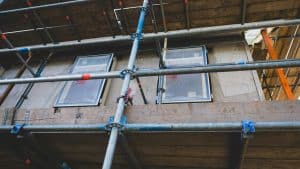Innovative Materials Transforming Vehicle Safety Standards
In today’s world, vehicle safety is a top priority for both consumers and manufacturers. As technology continues to advance, so do the standards for vehicle safety. One of the key factors in this evolution is the use of innovative materials in the design and construction of vehicles. These advanced materials are revolutionizing the way we think about vehicle safety and are pushing the boundaries of what we once thought was possible. Let’s take a closer look at how these materials are transforming vehicle safety standards.
The Rise of Innovative Materials
Traditionally, the material of choice for vehicle construction has been steel. While steel is durable and offers good structural support, it also comes with its limitations. One of the biggest drawbacks is its weight. As vehicle manufacturers strive to make their vehicles more fuel efficient, the need for lighter materials becomes increasingly important.
This is where innovative materials come into play. With advancements in technology, we now have access to a wide range of materials that offer incredible strength and durability at a fraction of the weight of steel. These materials include carbon fiber, aluminum alloys, and advanced plastics.
Carbon Fiber
Carbon fiber is one of the most widely used materials in the automotive industry today. Its high strength-to-weight ratio makes it a popular choice for both structural and non-structural components. Carbon fiber is also incredibly rigid, providing excellent impact resistance and making it ideal for use in safety features such as seat frames, roll cages, and crash boxes.
Aluminum Alloys
Another popular material is aluminum alloy. This lightweight material is known for its strength, corrosion resistance, and ability to be formed into complex shapes. It is commonly used in the construction of vehicle frames, body panels, and engine components. Its use in these areas helps to reduce the overall weight of the vehicle, improving fuel efficiency and handling.
Advanced Plastics
Advanced plastics, such as polycarbonate, are also making their mark in the automotive industry. These plastics offer strength and durability, and their malleability makes them ideal for use in vehicle interiors. Their use in safety features such as airbags and seat belts has also been successful, providing added protection for passengers in the event of a crash.
The Impact on Vehicle Safety Standards
The use of innovative materials in vehicle construction has had a significant impact on safety standards. By reducing the weight of vehicles, these materials have helped to improve fuel efficiency and handling, making them safer to drive. They have also allowed manufacturers to incorporate newer and more advanced safety features, such as those mentioned above, without compromising the overall weight and performance of the vehicle.
Additionally, these materials have also enhanced crash protection. With their high strength and impact resistance, they can help to absorb and redistribute crash forces, reducing the risk of serious injury in the event of a collision. This has led to improved crash test ratings and, ultimately, more confidence in the safety of these vehicles.
The Future of Vehicle Safety
As technology continues to advance, so will the materials used in vehicle construction. We can expect to see even more innovative materials being integrated into future vehicles, further improving safety standards and overall performance. Some experts predict that the use of these materials may eventually lead to the development of fully autonomous vehicles, drastically reducing the number of accidents caused by human error.
In conclusion, the use of innovative materials in vehicle construction has been a game-changer for safety standards. These materials offer a wide range of benefits, including improved fuel efficiency, enhanced crash protection, and the ability to incorporate advanced safety features. As we move towards the future, we can expect to see even more advancements in this area, leading to safer and more efficient vehicles for everyone.






